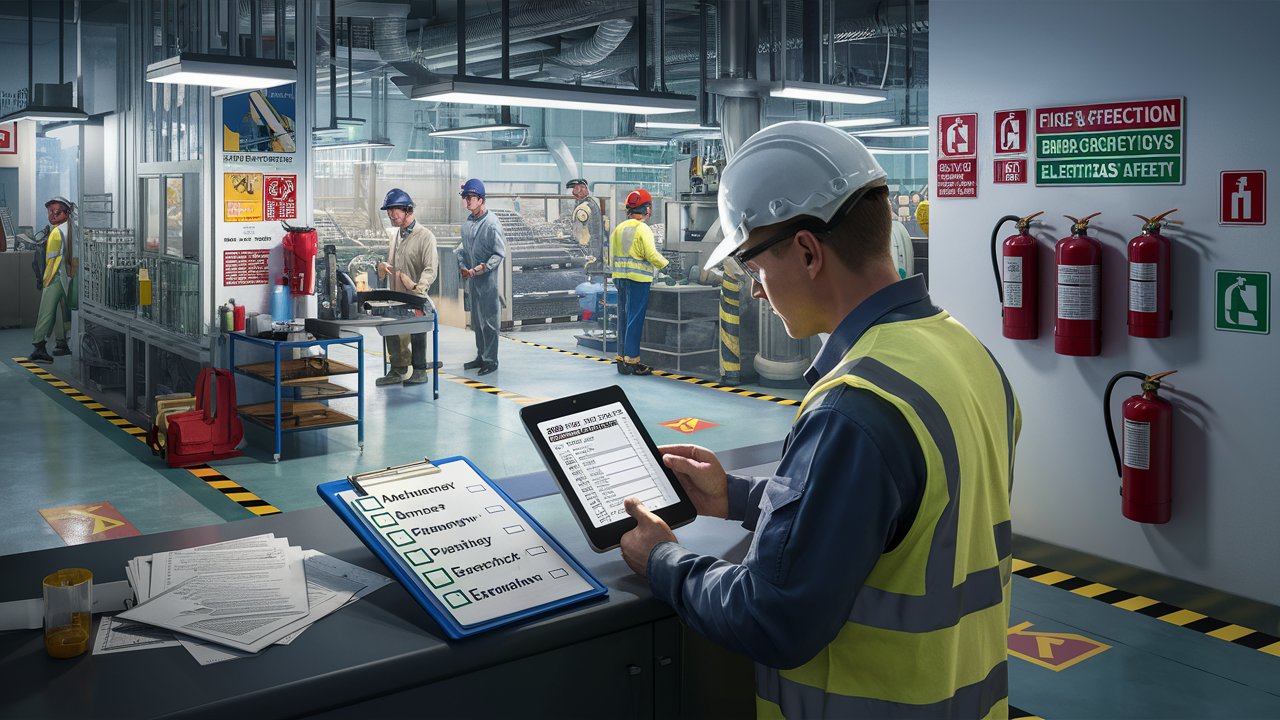Workplace safety is a significant responsibility for all organizations. The OSHA Audit Checklist is a crucial tool for ensuring that your workplace satisfies Occupational Safety and Health Administration (OSHA) regulations. This checklist assists firms in identifying possible dangers and implementing corrective actions to improve safety and compliance. In this post, we'll look at what an OSHA audit comprises, why it's important, and how to apply a complete OSHA audit checklist to protect your employees.

What is an OSHA Audit?
An OSHA audit evaluates your company's safety measures to ensure they comply with OSHA standards. OSHA, a branch of the United States Department of Labor, develops safety regulations to safeguard workers in a variety of industries. An audit helps to uncover areas of noncompliance, lower the likelihood of workplace accidents, and prevent costly fines.
Why is an OSHA Audit Important?
- Compliance: OSHA audits ensure that your business complies with federal safety regulations. Non-compliance can result in penalties and fines.
- Employee Safety: Regular audits help identify hazards, improving the overall safety of your workplace.
- Risk Mitigation: Identifying potential risks before they cause harm can reduce insurance costs and prevent injuries.
- Productivity: A safe work environment leads to less downtime due to accidents, enhancing overall productivity.
Key Components of an OSHA Audit Checklist
An effective OSHA audit checklist should include a thorough evaluation of various areas within your organization. Here are the key components to include:
- Workplace Conditions
- Check for hazardous materials and ensure proper labeling.
- Ensure proper ventilation, temperature control, and lighting.
- Inspect machinery and equipment for safety compliance.
- Personal Protective Equipment (PPE)
- Verify that employees have access to appropriate PPE.
- Ensure proper use and maintenance of PPE.
- Confirm that PPE training is provided to employees.
- Emergency Preparedness
- Check the availability and functionality of emergency exits and routes.
- Review emergency procedures and ensure employees are trained.
- Ensure first-aid kits and fire extinguishers are in place and regularly maintained.
- Workplace Environment
- Check for clutter or obstacles that could impede movement or cause accidents.
- Ensure floors are slip-resistant and clear of hazards.
- Verify that walkways are unobstructed.
- Training and Documentation
- Verify that all employees have received necessary safety training.
- Ensure records of training are kept up to date.
- Ensure that all safety policies and procedures are documented and accessible.
- Electrical Safety
- Check that electrical systems are properly maintained and grounded.
- Inspect wiring and extension cords for damage or misuse.
- Ensure that electrical panels are clearly labeled and accessible.
Experience Seamless Automation – Free Trial! https://axonator.com/request-for-demo/
Steps to Perform an OSHA Audit
- Preparation: Familiarize yourself with OSHA standards relevant to your industry. Prepare the necessary tools, including your checklist.
- Inspection: Walk through the workplace to assess the various safety components listed in the checklist.
- Employee Involvement: Interview employees about safety practices and any potential hazards they observe.
- Documentation: Keep detailed records of your findings, including areas that need improvement and recommendations for corrective actions.
- Follow-up: Implement necessary changes and conduct follow-up audits to ensure compliance.
Benefits of Using an OSHA Audit Checklist
- Systematic Evaluation: The checklist provides a structured approach to identifying hazards.
- Improved Safety: By following the checklist, you ensure that all critical safety areas are addressed.
- Avoid Penalties: Regular audits help you stay compliant with OSHA standards, avoiding fines.
- Better Employee Morale: Employees feel more confident and valued when they know their safety is a priority.
An OSHA audit is an important tool for ensuring a safe and compliant workplace. A complete OSHA audit checklist may help businesses identify risks, ensure adequate safety protocols are in place, and maintain a productive work environment. Remember that safety is an ongoing activity, and regular audits should be part of your company's routine to protect both employees and the organization.
